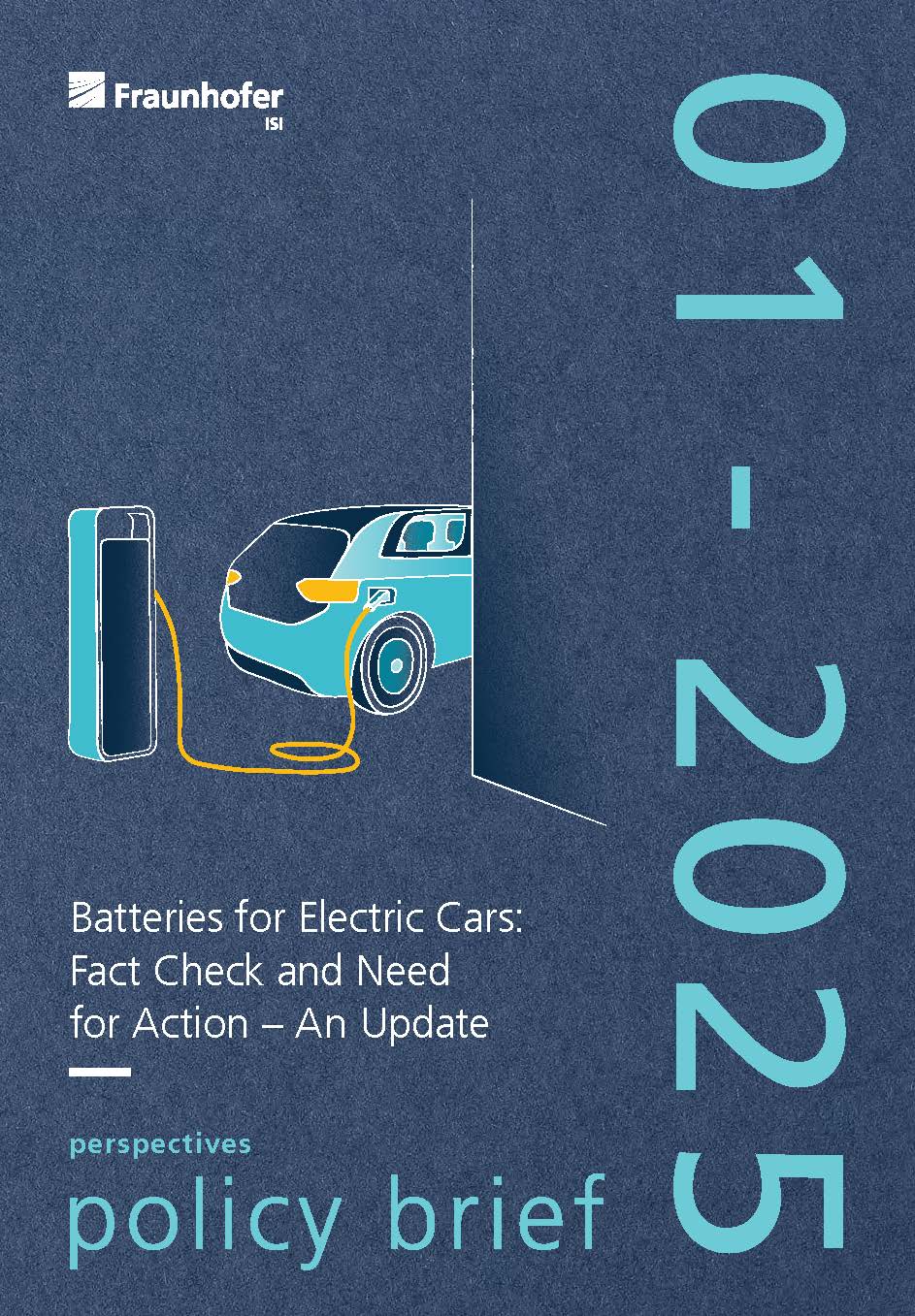Batteries for electric cars: Fraunhofer ISI’s policy brief provides answers to the most important questions
What are the trends in electric mobility and electric car batteries? What is the environmental impact of electric cars? What progress has been made in terms of range, what happens to the used batteries, and how high is the risk of fire? Fraunhofer ISI addresses these and many other questions along the entire battery value chain in its policy brief “Batteries for Electric Cars – Fact Check and Need for Action – An Update”.

Battery-powered cars will play an important role in the future in bringing the CO2 emissions from the transport sector more in line with political greenhouse gas reduction targets. Germany’s Federal Climate Action Act stipulates that CO2 emissions must be reduced by at least 65 percent by 2030 and by at least 88 percent by 2040 compared to 1990 levels for Germany to achieve its goal of climate neutrality by 2045. When looking at the transport sector, these targets can only be realized with low-emission and zero-emission vehicles and require economic incentives in addition to strict regulations
In this context, and because there are still occasional doubts about the sustainability, economic efficiency, and practicality of battery technology among some segments of the public, politics, and business, researchers at Fraunhofer ISI have analyzed the most important questions surrounding the topic of “Batteries for Electric Cars” in a policy brief. The policy brief reflects the current state of research, provides a fact check and draws on numerous scientific studies by Fraunhofer ISI and other organizations. The main findings are answers to fourteen key questions about batteries.
How have the electric car market and the number of registrations developed?
For example, the policy brief addresses the question of how electric mobility has developed. The authors conclude that demand for electric cars has risen significantly in recent years, and these currently account for almost 20 percent of new registrations worldwide. The global share of new electric cars is likely to grow to 40 percent by 2030 and to more than 50 percent by 2035, assuming climate protection efforts are maintained. After years of growth in the number of new electric car registrations, these declined in Germany in 2024 due to the abrupt termination of subsidies, among other things. However, the framework conditions indicate that Germany will also return to a path of growth.
How economical are electric cars?
As far as the economic efficiency of electric cars is concerned, in some cases, these are already performing better than comparable combustion engine cars in terms of total costs due to their lower running costs. This positive tendency is likely to continue into the future because of the trend toward controlled and bidirectional charging and falling sales prices.
What is the environmental impact of electric cars?
The authors of the policy brief also comment on the environmental balance of electric cars, which is already more positive than conventional combustion engine cars when regarded holistically from production, use, and up to disposal. With average mileage, a mid-range electric car emits 40 to 50 percent less CO2. The higher emissions when manufacturing electric vehicles are more than offset during their use phase. Controlled and bidirectional charging also improves the environmental balance of electric cars. Electric cars still face challenges with regard to other environmental issues, such as the use of critical raw materials.
How has the range of electric cars developed?
Top electric car models currently offer ranges of at least 400 kilometers. Many drivers consider this to be sufficient, also because charging times are becoming ever shorter as well. With respect to targeted ranges of more than 1,000 kilometers, it should be noted that increases in range also mean increases in costs and environmental impacts.
What happens to the used batteries?
Forecasts assume that sufficient recycling capacities will be available in the long term for end-of-life batteries and manufacturing waste. By 2035, up to 30 percent of the lithium, nickel, and cobalt required for battery cell production could be met by recycled materials.
How high is the fire risk?
Although fires in electric cars are more difficult to extinguish, current information does not indicate that they catch fire more frequently than conventional cars; several international studies even assume a significantly lower fire risk. This applies even more to the latest types of battery.
What challenges does the labor market face?
Many studies indicate there will be a significant decrease in the number of jobs in the automotive and supplier industries, not least because battery cell production is highly automated. Conversely, this can be compensated by new jobs created in other sectors, such as electricity generation and charging infrastructure.
Prof. Martin Wietschel, who co-heads the Department of Energy Technology and Energy Systems at Fraunhofer ISI, has the following to say about the new policy brief: “Electric cars are the most important drive technology for lowering emissions of greenhouse gases, and batteries are the key to this. Their market ramp-up is a central component of the transformation to climate-neutral mobility in Germany and Europe. This makes it all the more important to take a scientific and analytical look at the developments, potential, and obstacles related to electric mobility and provide recommendations for action. This is precisely what we do in our policy brief, which is aimed equally at policymakers, experts and the general public”.
Always up-to-date
The Fraunhofer Institute for Systems and Innovation Research ISI analyzes the origins and impacts of innovations. We research the short- and long-term developments of innovation processes and the impacts of new technologies and services on society. On this basis, we are able to provide our clients from industry, politics and science with recommendations for action and perspectives for key decisions. Our expertise is founded on our scientific competence as well as an interdisciplinary and systemic research approach.